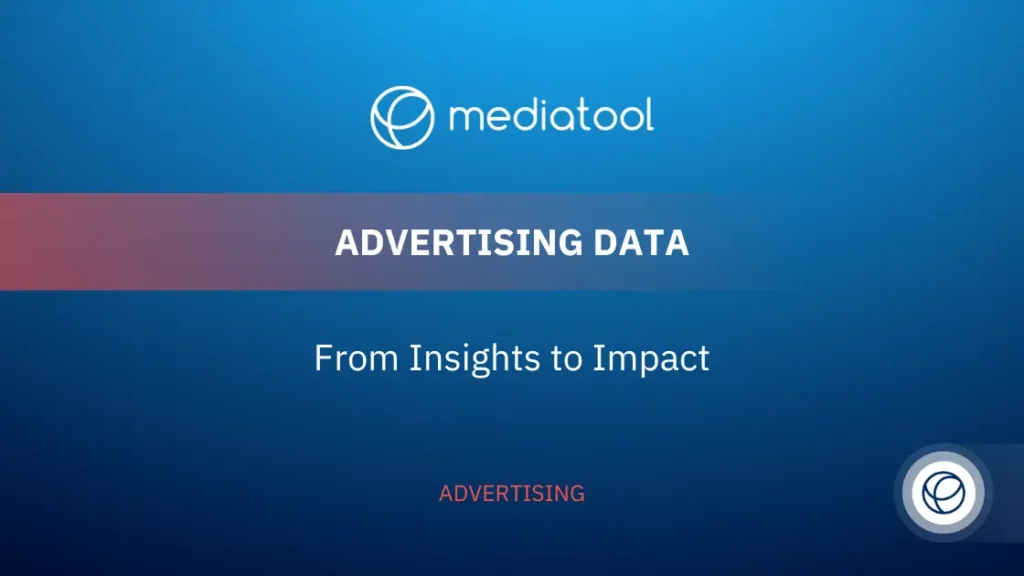Are you struggling to connect with your audience? You’re not alone. Many businesses miss the mark, wasting time and money on strategies that don’t work.
The key to success? Advertising data. It’s the solution that turns guesswork into strategy, helping you understand your audience, refine your campaigns, and boost your sales.
You can make informed decisions that lead to real results with advertising data.
What is Advertising Data?
Advertising data is the foundation for successful marketing campaigns across the digital landscape. Businesses and marketers leverage the essential raw material to grasp their target audience, monitor ad performance, and customize their strategies accordingly.
At its core, it consists of detailed information on ads’ viewing and interaction patterns, including who engages with them and how these interactions affect consumer behavior and sales trends.
Why is Advertising Data Important?
Operating in the digital marketing space without advertising data means missing essential insights needed for informed decision-making. This data represents crucial information about your target market, helping you understand successful strategies, areas needing improvement, and the reasons behind each outcome.
Businesses can use advertising data to increase brand awareness, optimize their marketing efforts, and boost sales. The focus is not solely on reaching a broader audience but on targeting the right people with timely and relevant messages.
Where is Advertising Data Collected From?

Understanding where advertising data comes from is essential for harnessing its full potential. This data can be collected from various sources, each offering unique insights into customer behavior and preferences. Here’s a detailed look at these sources:
Online Sources
Social Media Platforms
Social media platforms are treasure troves of advertising data. Every like, share, comment, and follow gives insights into what content engages your audience. Businesses can analyze this data to understand which topics or products resonate most with their target audience.
Search Engines
Data from search engines, especially Google Search, offers valuable insights into what people are looking for online. Tracking keywords and phrases that lead users to your website helps you understand their needs and refine your content to match their search intent.
Websites and Blogs
Your website and blog are not just platforms to showcase your products or share your thoughts. They are also important sources of data. By using analytics tools, you can track which pages visitors spend the most time on, where they drop off, and how they navigate through your site.
Online Ads and YouTube Ads
Ads displayed across the internet and on platforms like YouTube provide data on how many people viewed the ad, clicked on it, and took action. This helps in understanding which ad formats and messages are most effective.
Offline Sources
In-Store Interactions
Physical stores are not left out in the data collection process. Sales data, customer feedback, and loyalty program interactions offer insights into customer preferences and buying behavior.
Phone Calls
Customer service calls and inquiries can be a valuable source of data. Recording and analyzing these interactions can reveal common concerns, questions, and preferences of your customers.
Events and Surveys
Participation in events, whether hosting or attending, and conducting surveys provide direct feedback from consumers. These interactions are invaluable for understanding consumer needs and evaluating the effectiveness of your marketing messages.
Integrating Data for Comprehensive Insights
Collecting data from these diverse sources provides a comprehensive view of your advertising efforts and customer behavior.
The key is to integrate this data to paint a complete picture of how your audience interacts with your brand, both online and offline. This integrated approach allows for more targeted and effective advertising strategies, driving better results for your business.
By leveraging both online and offline sources of advertising data, businesses can gain a deeper understanding of their target audience, optimize their marketing efforts, and ultimately drive more effective advertising campaigns.
What are the Different Types of Advertising Data?

Advertising data is a broad term that encompasses various types of information collected through digital and traditional marketing channels.
This data is pivotal for crafting strategies that resonate with your target audience, optimizing ad spending, and ultimately, enhancing your brand’s presence in the market.
Let’s break down the main categories of advertising data and how they contribute to a successful marketing strategy.
First-Party Data
Overview
First-party data is gathered directly from your interactions with customers. This includes information from website visits, social media engagement, and direct transactions with your brand. It’s a goldmine for creating personalized marketing strategies, offering a deep dive into the preferences and behaviors of your audience.
Importance in Marketing Strategy
Leveraging first-party data allows advertisers to tailor their messaging, ensuring that it’s relevant to their audience. This data is integral to developing targeted campaigns that speak directly to the customer’s needs and interests, significantly increasing the chances of engaging new customers and retaining existing ones.
Consumer Data
Key to Personalization
Consumer data covers demographic information, interests, and behaviors of your potential and existing customers. It’s crucial for unlocking personalized marketing messages and creating content that resonates with your target audience.
Predictive analytics and artificial intelligence can further refine this data, offering predictive customer insights that help in anticipating future consumer behaviors.
Performance Data
Measuring Success
Performance data focuses on the outcomes of your marketing efforts. Metrics like click-through rates, conversion rates, and overall sales provide a clear picture of how effective your ads are.
This data is essential for advertisers to optimize their campaigns, allocate ad spending efficiently, and achieve a better return on investment.
Engagement Data
Understanding Customer Interaction
Engagement data sheds light on how customers interact with your ads. It tracks actions such as sharing, commenting, and liking, offering valuable insights into what type of content captures the audience’s attention.
This information is crucial for businesses to fine-tune their messaging and strategy, ensuring that they deliver relevant content that engages their target audience.
Leveraging Data for Strategic Advantage
Each type of advertising data plays a pivotal role in shaping effective marketing strategies. By harnessing the power of first-party and third-party data, companies can gain a competitive advantage, creating campaigns that truly resonate with their audience.
The ability to analyze consumer, performance, and engagement data allows for a more nuanced understanding of the customer journey, from initial awareness through to conversion.
This comprehensive approach ensures that marketing resources are used effectively, driving growth and building a strong connection with the audience.
Incorporating data analytics, artificial intelligence, and predictive analytics into the process not only enhances the accuracy of the insights gained but also empowers advertisers to stay ahead in a rapidly evolving digital landscape.
By continuously adapting to the insights derived from advertising data, brands and companies can ensure that their marketing strategy remains dynamic, relevant, and successful in attracting and retaining customers.
Using Data to Develop a Winning Advertising Strategy
Leveraging advertising data effectively is essential for crafting strategies that not only reach but deeply resonate with your target audience. Here’s a step-by-step guide on how to use this data to your advantage:
Understand Your Audience
Leveraging Customer Data
The first step is to dive deep into customer data. This involves analyzing information to understand what your potential customers desire and the challenges they face that your product or service can address.
By getting to know your audience’s preferences, behaviors, and demographics, you can tailor your marketing efforts to match their expectations.
Set Clear Objectives
Guiding Your Strategy with Clear Goals
Define what you aim to achieve with your marketing strategy. Whether the goal is to boost brand awareness among internet users or drive conversions, having clear objectives will help steer all your marketing efforts in the right direction.
This clarity ensures that every campaign is aligned with your business goals, maximizing the impact of your advertising spend.
Test and Learn
The Role of Performance Data
Use performance data to experiment with different messages and channels. This iterative process of testing, learning, and adapting is crucial. It allows you to identify the most effective strategies for engaging your target audience.
By analyzing the results of these tests, you can refine your approach, ensuring that your campaigns are always optimized for the best possible outcomes.
Personalize Your Messaging
Utilizing Engagement Data for Tailored Communications
Engagement data provides insights into how your audience interacts with your content. This information is invaluable for personalizing your messaging.
By understanding what content elicits responses like shares, comments, and likes, you can create campaigns that speak directly to your audience’s needs and interests. Personalization, powered by data, significantly enhances the relevance and effectiveness of your marketing messages.
Optimize for Growth
Continuous Improvement Through Data Analysis
The final step involves constantly analyzing your advertising data to identify opportunities for optimization. This ongoing evaluation helps determine where to allocate resources more effectively, ensuring that your ad spend yields the highest possible return.
By focusing on strategies that drive engagement and conversions, you can continuously refine your approach to achieve sustainable growth.
By embracing data-driven advertising strategies, companies can create efficient, impactful marketing strategies. The key lies in continually leveraging customer insights, performance statistics, and engagement metrics to fine-tune your efforts.
This dynamic process not only saves resources but also significantly boosts advertising revenue. In the end, the goal is to foster a deeper connection with your audience, turning insights into impactful actions that resonate across every touchpoint.
Conclusion
Advertising data stands at the core of digital marketing success. It equips marketers with the insights needed to drive growth and achieve remarkable outcomes in today’s digital landscape.
Engaging with this data actively allows you to understand your audience deeply and refine your strategies effectively. Embrace the wealth of information at your disposal, heed the valuable insights it provides, and use it to steer your marketing strategies toward achieving your business goals.





